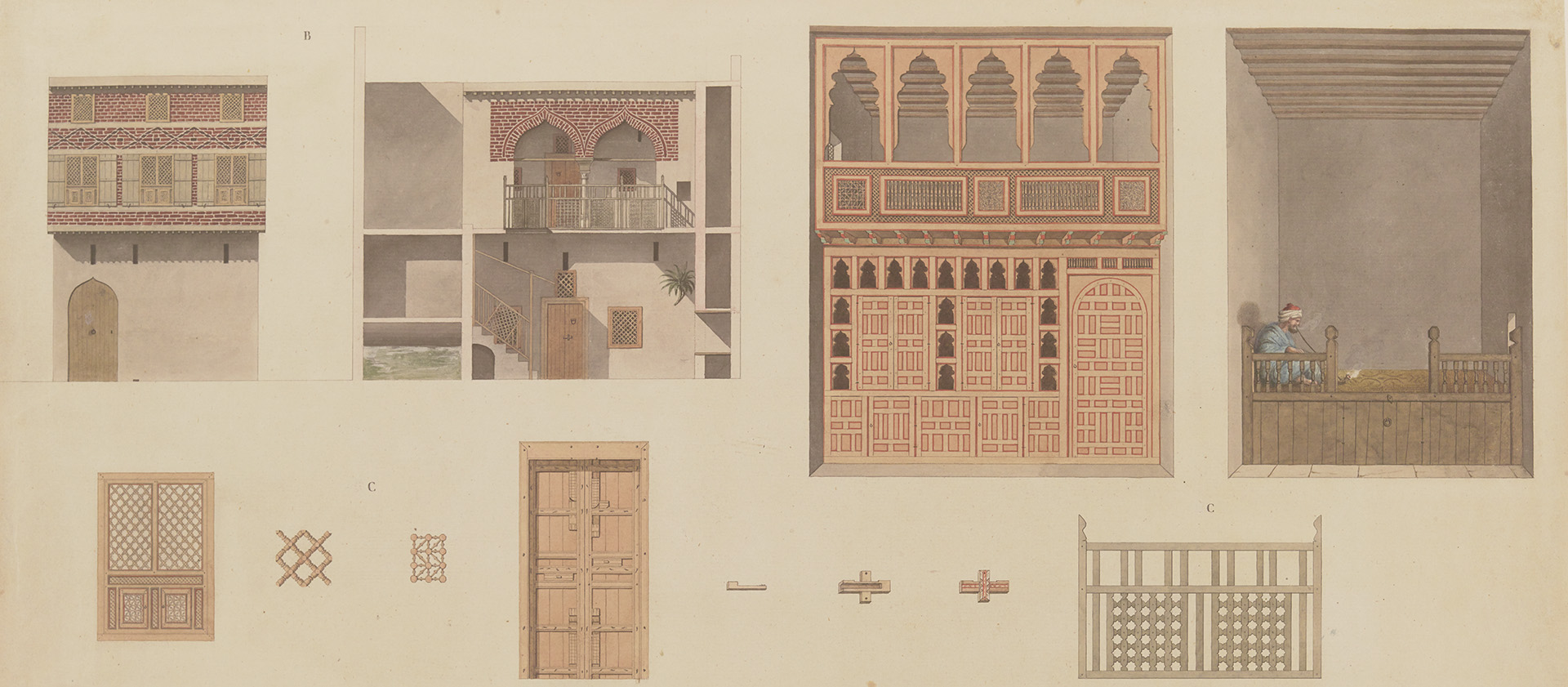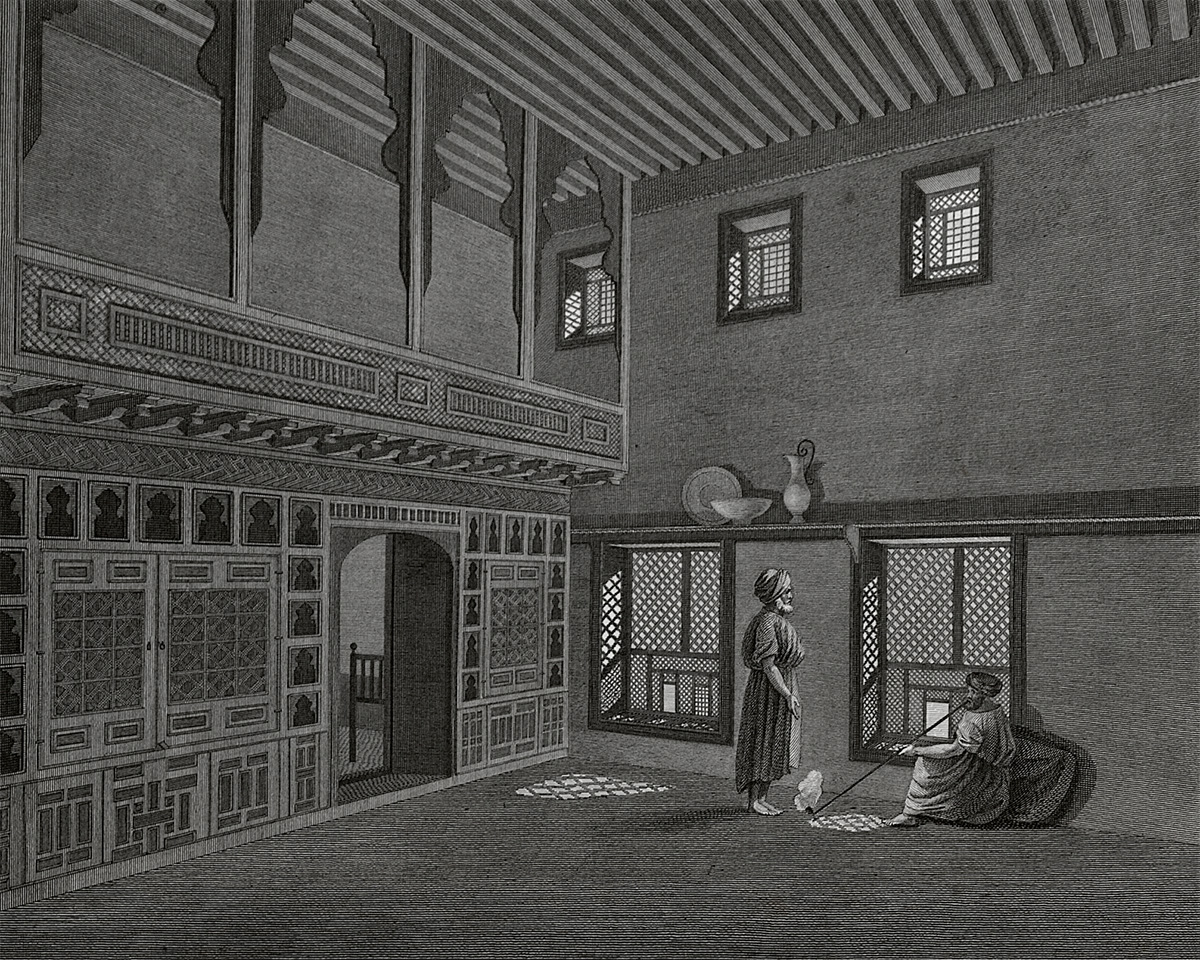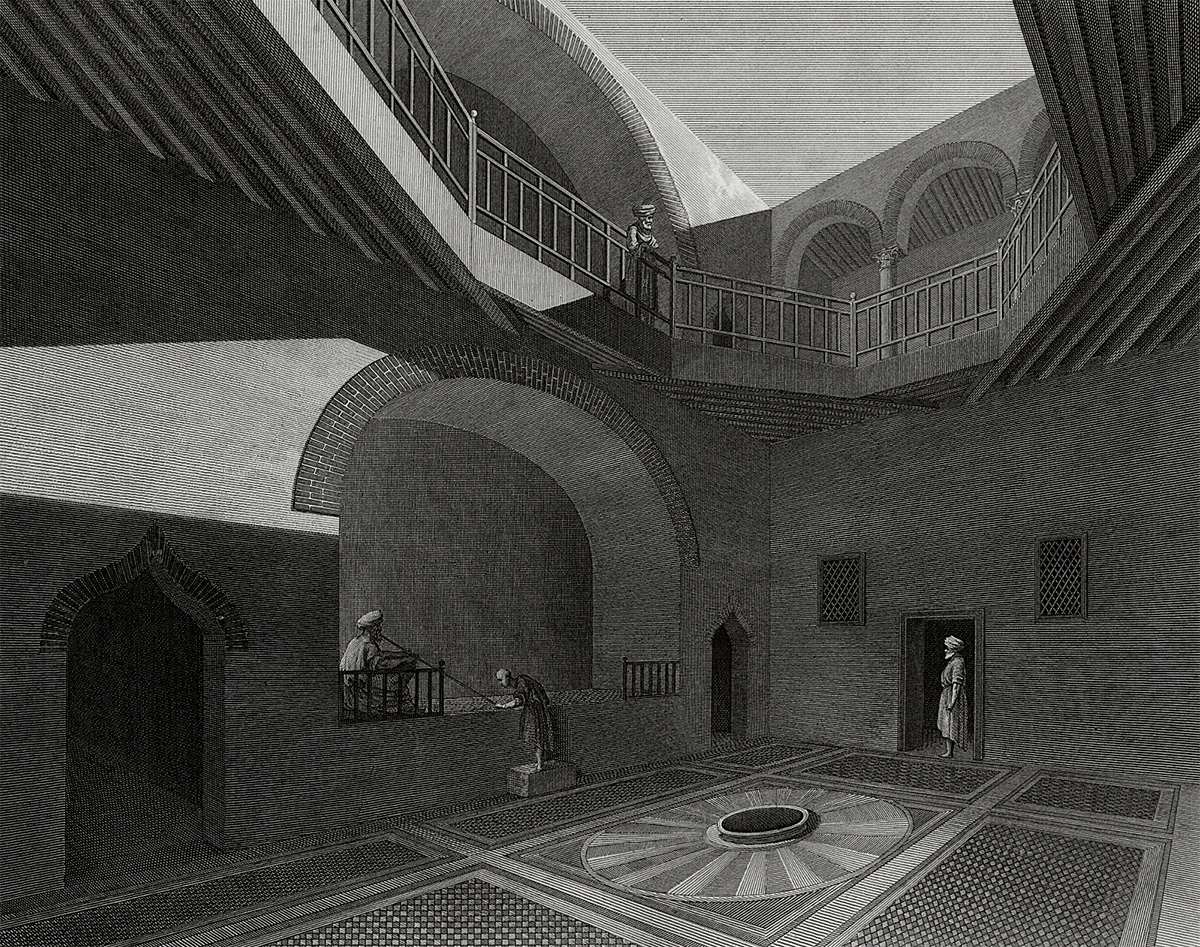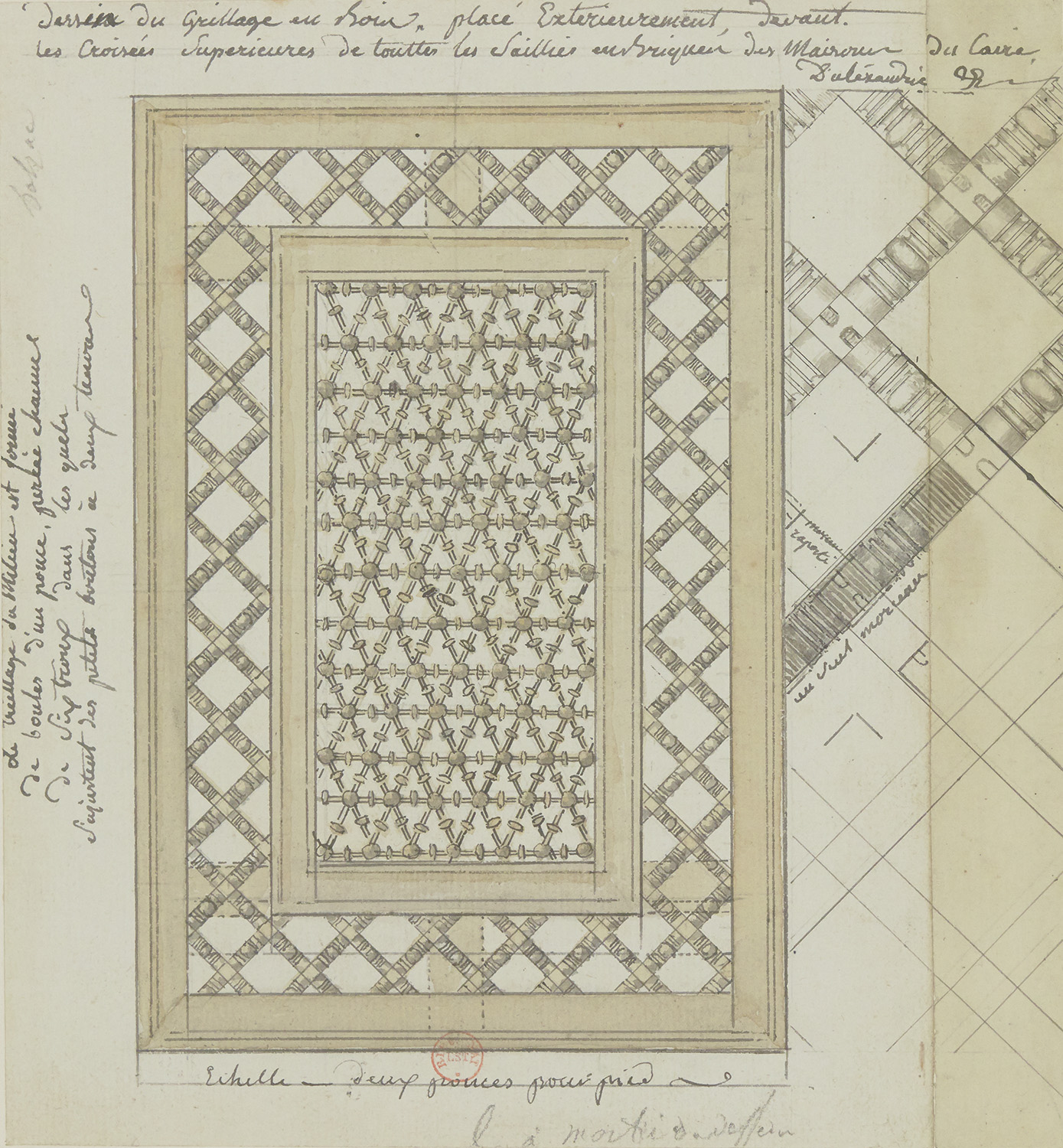Daily life
Cisterns Hammams Ottoman houses Cemeteries and mausoleums Mosques Bazaars and streets Alexandrian portraits

“Elevations, sections and woodwork of a Turkish house”, ink wash, watercolour, pen and ink, Henri-Joseph Redouté, Description de l’Égypte, État moderne, Planches, Vol. 2, pl. 93.3-6
Each house usually has a small square courtyard surrounded by a terrace with a wooden balustrade; sometimes it is octagonal. There are two levels of accommodation, divided into two parts, one for the men, the other for the women; the latter is called the harem, and is always located inside, […] at the opposite end is a partition that separates the room, with a hidden staircase communicating with a sort of entresol open at the top onto the accommodation. All the interior decoration of the house is on this side, with bare pine wood panelling, divided into compartments, with cupboards and square boxes, separated from each other…
The windows are fitted with very thick wooden lattice work, projecting out like a balcony, sometimes arched, in various elegant shapes, but they never have panes of glass. The women often sit behind these blinds to breathe the air and see outside, without ever being seen…
Henri-Joseph Redouté, carnet 2, f. 32-33, BnF, Bibliothèque de l’Arsenal, MS-15433
“Interior views of a private house”, intaglio engraving, Jean-Constantin Protain, illustrator, Jean-Baptiste Reville, engraver, Description de l’Égypte, État moderne, Planches, Vol. 2, pl. 92
“Illustration of the wooden lattice, placed externally on the muntins of all the brick projections of the houses in Cairo and Alexandria”, watercolour, ink wash, pen and pencil, Charles-Louis Balzac, Description de l’Égypte, État moderne, Planches, Vol. 2, pl. GG.8



